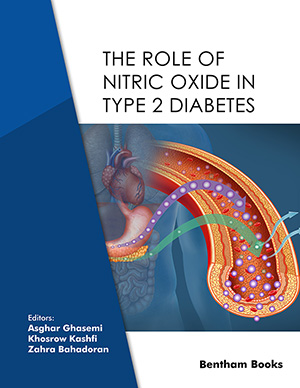Abstract
Uric acid (UA) is the end product of purine catabolism in humans. Hyperuricemia, defined as elevated plasma concentrations of UA above 7 mg/dL, is a risk factor for developing hypertension, cardiovascular diseases, chronic kidney disease, and type 2 diabetes. Hyperuricemia can induce pancreatic β-cell death and impaired insulin secretion. It can also disrupt insulin-induced glucose disposal and insulin signaling in different insulin-sensitive tissues, including cardiomyocytes, skeletal muscle cells, adipocytes, hepatocytes, and endothelial cells. These events lead to the development of systemic insulin resistance and impaired glucose metabolism. Induction of inflammation, oxidative stress, and impairment of nitric oxide (NO) metabolism mediate hyperuricemia-induced insulin resistance and dysglycemia. This chapter is focused on the potential mediatory role of NO metabolism on hyperuricemia-induced dysglycemia and insulin resistance.
Keywords: Hyperuricemia, Insulin Receptor, Insulin Resistance, Type 2 Diabetes, Uric Acid.






















